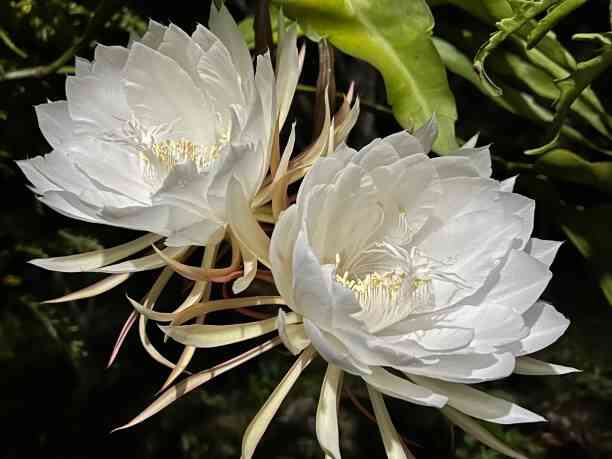The Kadupul flower, also known as “Epiphyllum oxypetalum,” is a rare and enchanting bloom often referred to as the “Queen of the Night” or the “Dutchman’s Pipe Cactus.” Here are some fascinating details about this remarkable flower:
1. Appearance and Blooming: The Kadupul flower is a cactus that produces large, fragrant white flowers. Its blooms are nocturnal, opening only at night and wilting before dawn, which adds to its mystique and allure. The flowers typically bloom once a year, making their appearance a highly anticipated event.
2. Habitat and Distribution: Native to Sri Lanka, the Kadupul flower is also found in various parts of South and Central America. It thrives in warm, humid climates and can often be seen growing on trees or rocks in its natural habitat.
3. Myth and Legend: The ephemeral nature of the Kadupul flower has inspired numerous legends and myths. In Sri Lankan folklore, it is believed that the bloom is a divine gift from the celestial beings, and witnessing it brings good fortune. Its transient beauty symbolizes the fleeting nature of life and the importance of appreciating moments of beauty and wonder.
4. Botanical Characteristics: The Kadupul flower is an epiphyte, meaning it grows on other plants for physical support while deriving moisture and nutrients from the air and surrounding environment. Its scientific name, “Epiphyllum oxypetalum,” reflects its epiphytic nature and the pointed, petal-like structure of its flowers.
5. Cultural Significance: Beyond its biological characteristics, the Kadupul flower holds significant cultural and aesthetic value. It is often depicted in art and literature as a symbol of rarity and beauty. The flower’s brief blooming period makes it a metaphor for transient beauty and the preciousness of fleeting moments.
In summary, the Kadupul flower is a captivating and rare bloom celebrated for its brief yet stunning appearance. Its unique blooming pattern, cultural significance, and botanical characteristics make it a subject of fascination and admiration across the world.



